-
Modelers Alliance has updated the forum software on our website. We have migrated all post, content and user accounts but we could not migrate the passwords.
This requires that you manually reset your password.
Please click here, http://modelersalliance.org/forums/login to go to logon page and use the "Forgot your Password" option.
You are using an out of date browser. It may not display this or other websites correctly.
You should upgrade or use an alternative browser.
You should upgrade or use an alternative browser.
1/18 scale Flettner Fl-282V21 Kolibri scratchbuild
- Thread starter Nick_Karatzides
- Start date
Nick_Karatzides
Member
1/18 scale Flettner Fl-282 V21 Kolibri scratchbuil
If the assembly sequence would follow the instructions by-the-book, the two battery packs should be placed on appropriate brackets located on either side of the transmission unit as shown in the picture from the kit manual. Since the original building idea requires to setup the 1/18 scale Kolibri model in such way to look like under maintenance (or refueling) procedure with all the hatches & sliding panels opened or removed, I decided to deviate just a little from the schedule and do something different: To unplug the batteries and place them somewhere else - possibly on some wooden box or the previously mentioned wooden ladder, one of these unrelated to the helicopter structure additional parts which were designed & 3D printed to be used as part of a diorama scene.
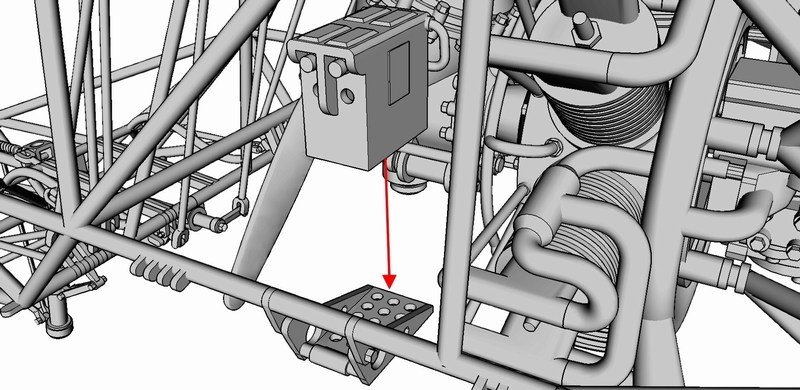
If the assembly sequence would follow the instructions by-the-book, the two battery packs should be placed on appropriate brackets located on either side of the transmission unit as shown in the picture from the kit manual. Since the original building idea requires to setup the 1/18 scale Kolibri model in such way to look like under maintenance (or refueling) procedure with all the hatches & sliding panels opened or removed, I decided to deviate just a little from the schedule and do something different: To unplug the batteries and place them somewhere else - possibly on some wooden box or the previously mentioned wooden ladder, one of these unrelated to the helicopter structure additional parts which were designed & 3D printed to be used as part of a diorama scene.

Nick_Karatzides
Member
1/18 scale Flettner Fl-282 V21 Kolibri scratchbuil
Each one of the 1/18 scale Flettner 282 V21 kits contains two crew seats for the pilot and for the rearwards facing observer. The observer’s seat consists of two perforated plywood boards, one for the bottom part fixed on a retractable bracket and one for the backrest fixed on frame rails. Cushions are placed over bottom part & backrest plywood boards to provide comfort. On the other hand, the pilot’s seat consists of a (similar cushion covered perforated plywood board) bottom part only, since he rests his back-pack type parachute against the front fuselage cover.
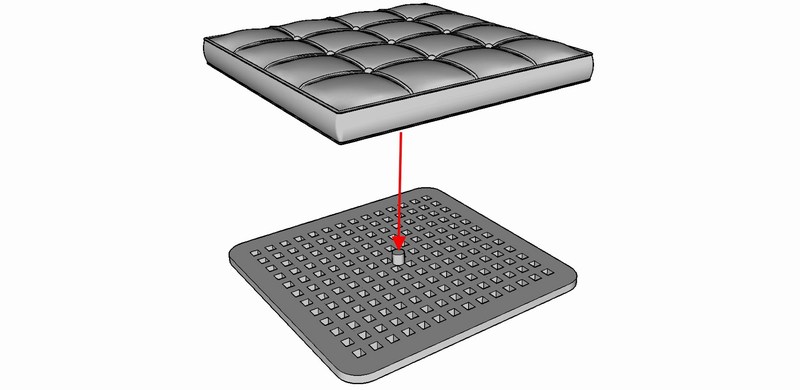
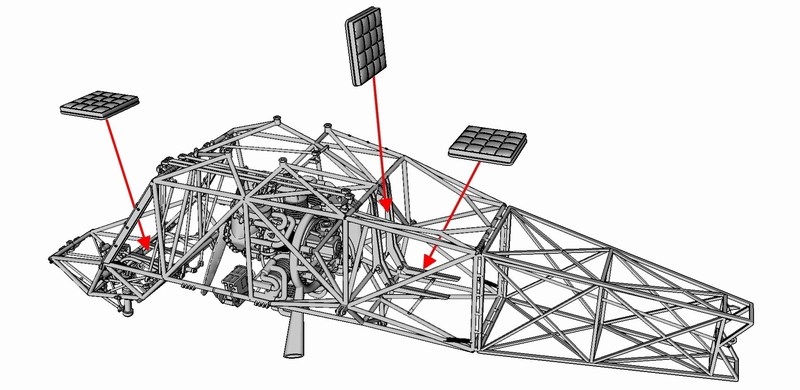
Having just painted the perforated plywood boards and being quite pleased with the outcome, I decided (once again) to deviate from the instructions and skip the cushions installation - after all, the reddish varnished look on plywood boards seems to make a fine contrast with the overall RLM 71 Dunkelgrün FS 34079 and breaks the green monotony.
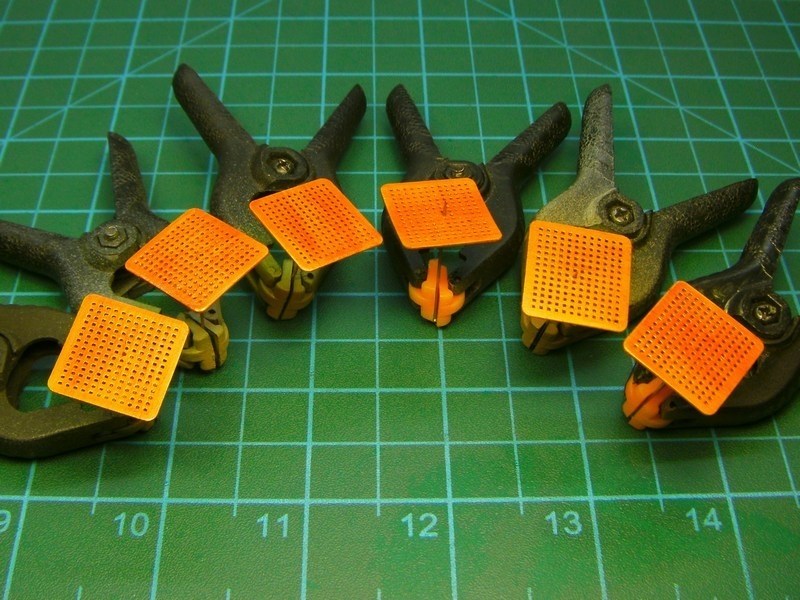
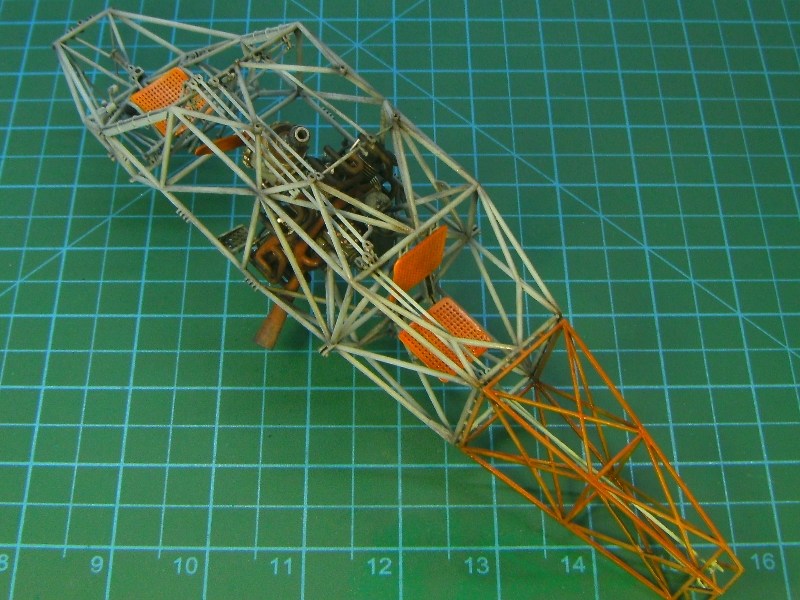
CHAPTER VIII - Crew seats & front fuselage cover assembly
Each one of the 1/18 scale Flettner 282 V21 kits contains two crew seats for the pilot and for the rearwards facing observer. The observer’s seat consists of two perforated plywood boards, one for the bottom part fixed on a retractable bracket and one for the backrest fixed on frame rails. Cushions are placed over bottom part & backrest plywood boards to provide comfort. On the other hand, the pilot’s seat consists of a (similar cushion covered perforated plywood board) bottom part only, since he rests his back-pack type parachute against the front fuselage cover.


Having just painted the perforated plywood boards and being quite pleased with the outcome, I decided (once again) to deviate from the instructions and skip the cushions installation - after all, the reddish varnished look on plywood boards seems to make a fine contrast with the overall RLM 71 Dunkelgrün FS 34079 and breaks the green monotony.


Nick_Karatzides
Member
1/18 scale Flettner Fl-282 V21 Kolibri scratchbuil
Those who have followed this thread from the start, will remember that the front fuselage cover had already been covered with an overall dark undercoat and later gradually airbrushed with RLM 71 Dunkelgrün FS 34079 to achieve proper gradations of light. The front fuselage cover patiently awaited the tubular frame painting completion, in order to come the turn to be properly installed. The part carefully dragged in place along the frame tubes, until reached down on the pilot’s seat & secured in place with a drop of cyanoacrylate super glue.
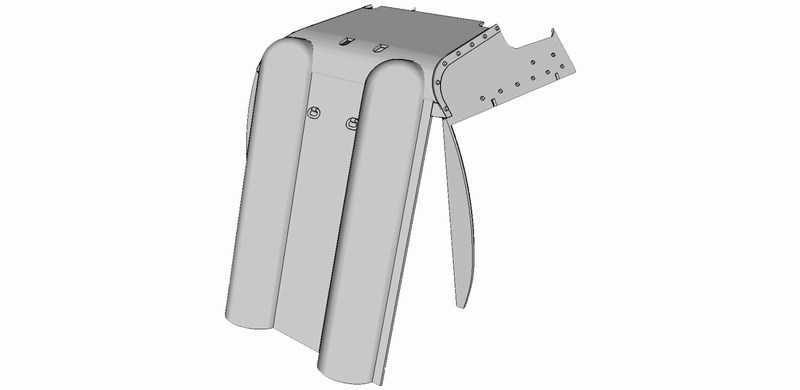
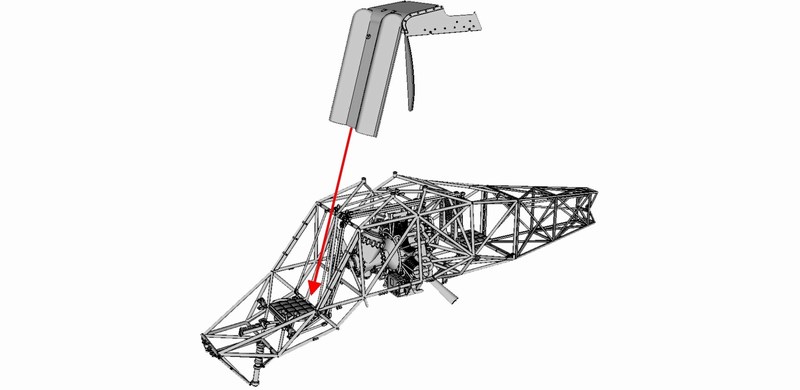
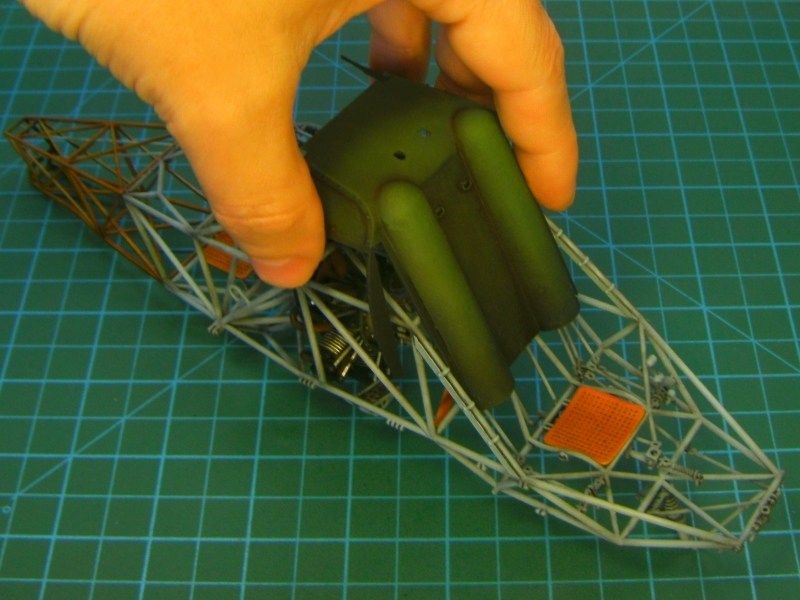

Those who have followed this thread from the start, will remember that the front fuselage cover had already been covered with an overall dark undercoat and later gradually airbrushed with RLM 71 Dunkelgrün FS 34079 to achieve proper gradations of light. The front fuselage cover patiently awaited the tubular frame painting completion, in order to come the turn to be properly installed. The part carefully dragged in place along the frame tubes, until reached down on the pilot’s seat & secured in place with a drop of cyanoacrylate super glue.




1/18 scale Flettner Fl-282 V21 Kolibri scratchbuil





The colors are just so vivid, warm. You're nailing this Nick!
Those who have followed this thread from the start, will remember that the front fuselage cover had already been covered with an overall dark undercoat and later gradually airbrushed with RLM 71 Dunkelgrün FS 34079 to achieve proper gradations of light. The front fuselage cover patiently awaited the tubular frame painting completion, in order to come the turn to be properly installed. The part carefully dragged in place along the frame tubes, until reached down on the pilot’s seat & secured in place with a drop of cyanoacrylate super glue.

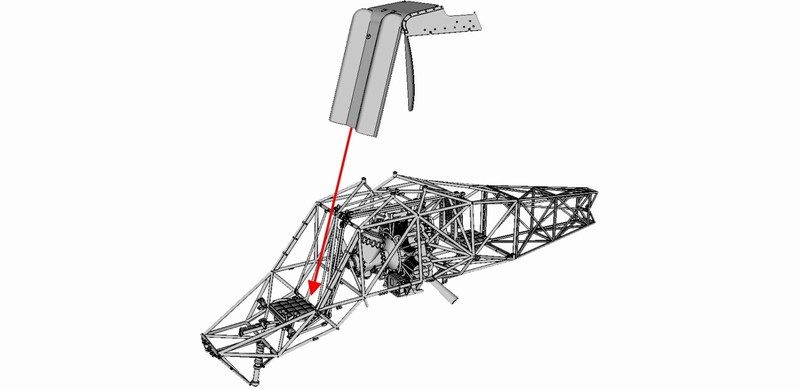
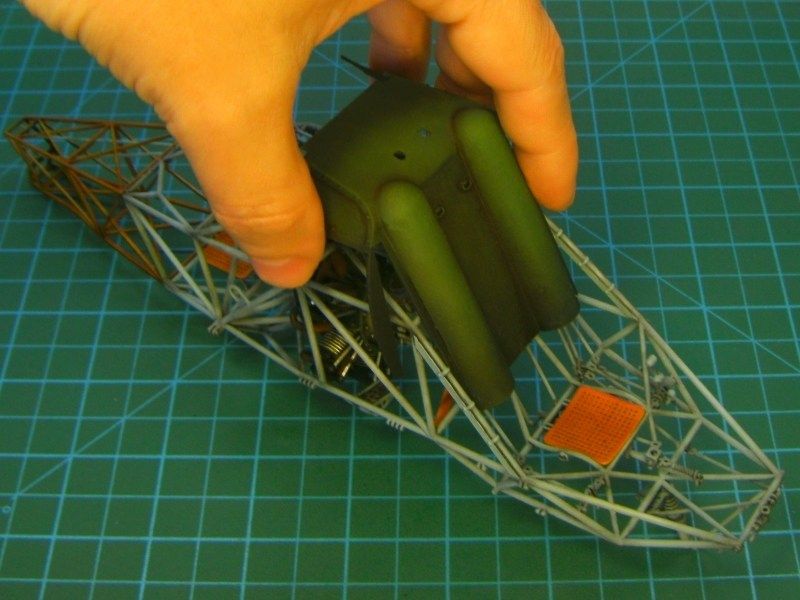
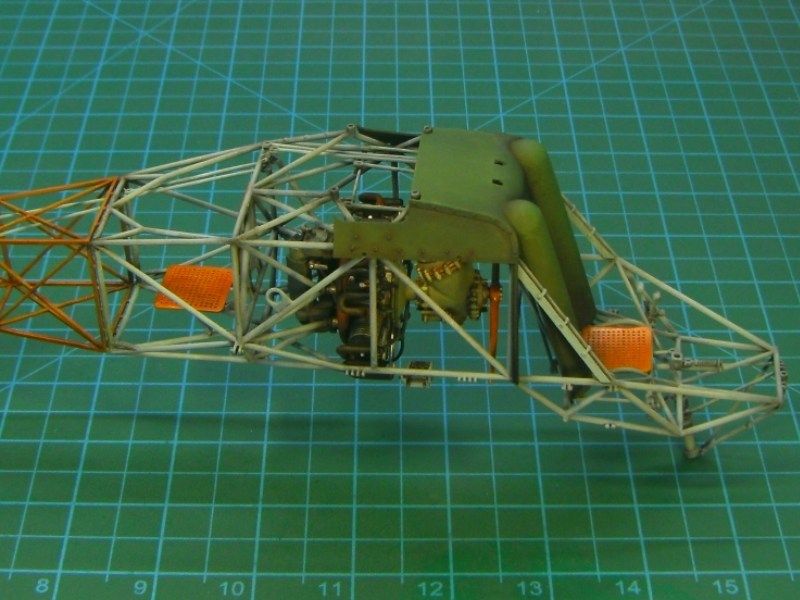





The colors are just so vivid, warm. You're nailing this Nick!
phantom II
Master at Arms
1/18 scale Flettner Fl-282 V21 Kolibri scratchbuil
Very, very cool indeed

Cheers, Christian B)
Very, very cool indeed
Cheers, Christian B)
Nick_Karatzides
Member
1/18 scale Flettner Fl-282 V21 Kolibri scratchbuil
The first two production model kits under 1/18 scale, were 3D designed such way to have the seatbelts & buckles embossed on the crew seat cushions - a tactic that later altered, since customers mostly prefered to add their own harness or leave the miniature helicopter free of straps webbing. For this reason, the seatbelts shown into following pictures were built from 2.5mm to 3.5mm wide masking tape and photoetched set by Eduard, under 1/20 scale. The seatbelts later got some brownish & khaki paint - so as to make sharp & nice looking contrast against the reddish varnished plywood seatboards and the overall RLM 71 Dunkelgrün FS 34079 painted airframe cover.
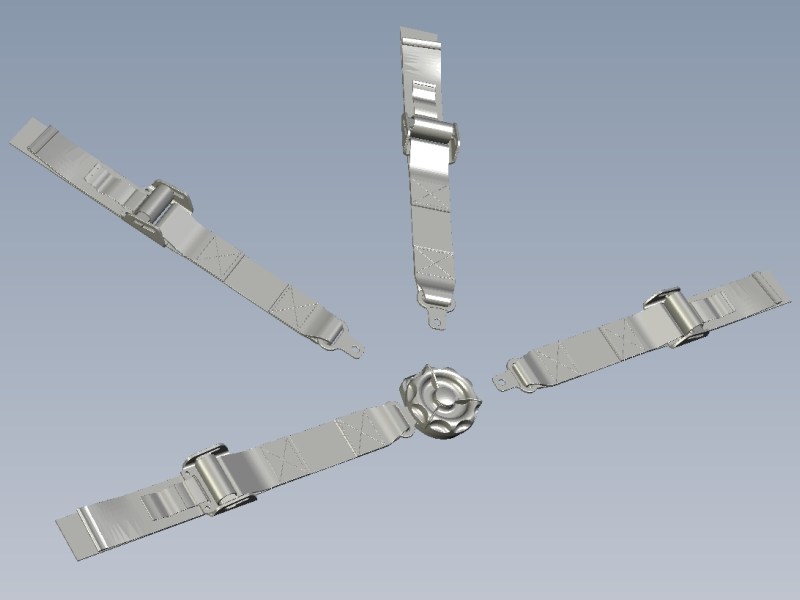
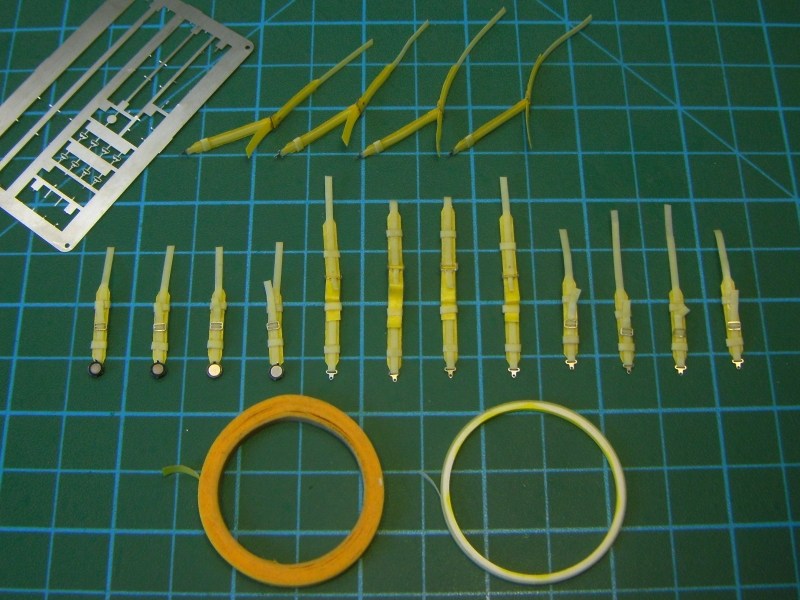
The first two production model kits under 1/18 scale, were 3D designed such way to have the seatbelts & buckles embossed on the crew seat cushions - a tactic that later altered, since customers mostly prefered to add their own harness or leave the miniature helicopter free of straps webbing. For this reason, the seatbelts shown into following pictures were built from 2.5mm to 3.5mm wide masking tape and photoetched set by Eduard, under 1/20 scale. The seatbelts later got some brownish & khaki paint - so as to make sharp & nice looking contrast against the reddish varnished plywood seatboards and the overall RLM 71 Dunkelgrün FS 34079 painted airframe cover.


Nick_Karatzides
Member
1/18 scale Flettner Fl-282 V21 Kolibri scratchbuil
The rear fuselage section on real Flettner 282 helicopter was made of doped fabric covering over the steel and wooden frame. Those who have followed this thread from the start, will remember that the rear fuselage section had already been covered with an overall black / dark brown undercoat and then gradually lighten the surfaces to replicate the way that sunlight hits on large objects, following the Francois Verlinden’s old-fashioned way (which was re-introduced and become popular around the scale modelling community, by its new "modulation" name). The dark undercoat, gradually airbrushed with RLM 71 Dunkelgrün FS 34079 to achieve proper gradations of light, trying to balance between realism factor and artistic expression. IMHO modulation effect does not accurately replicate the reality, but it looks so artistically attractive and becomes easily accepted by our visual subconscious. Custom made water slide decals applied and later everything washed by brushing “Winter Streaking Grime” AK014 filter available by AK Interactive, until the desired colour density is achieved.
As described into pages #25 to #27 of the ultra-detailed “1/18 Fl-282 V21 kit building instructions” manual (which can be found HERE as a downloadable PDF format file), the rear fuselage cover part carefully dragged along the miniature's wooden frame, until reached down on the transmission pivots & secured in place with a drop of cyanoacrylate super glue.
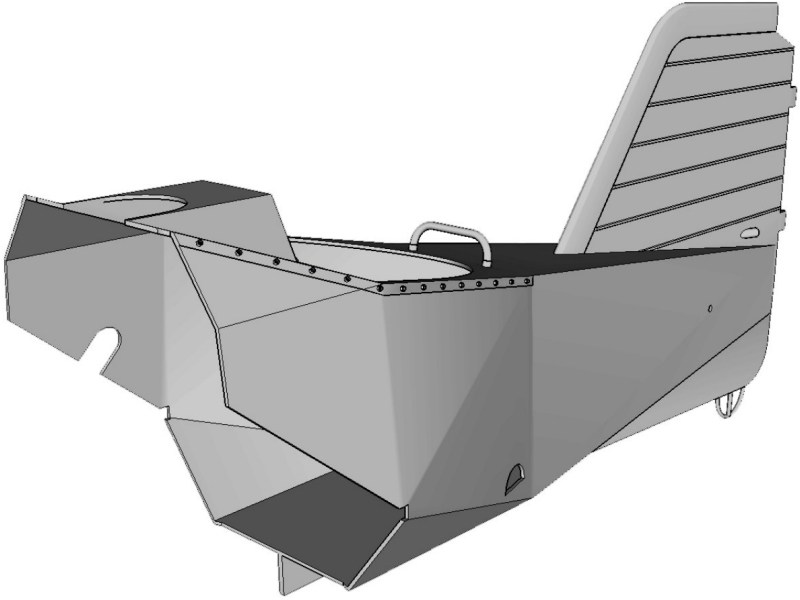
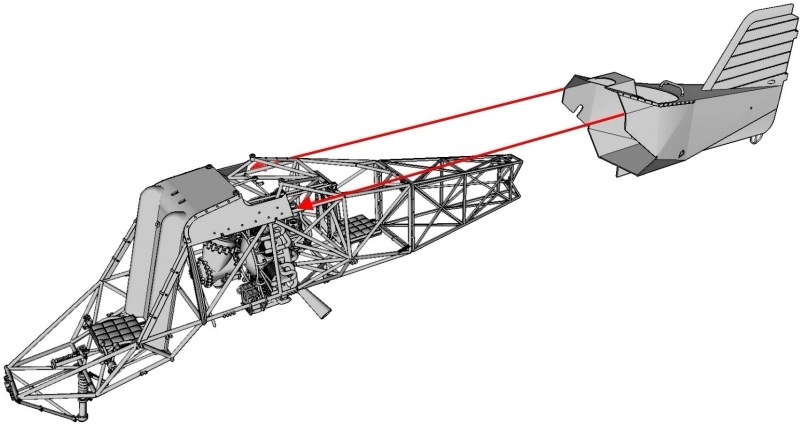

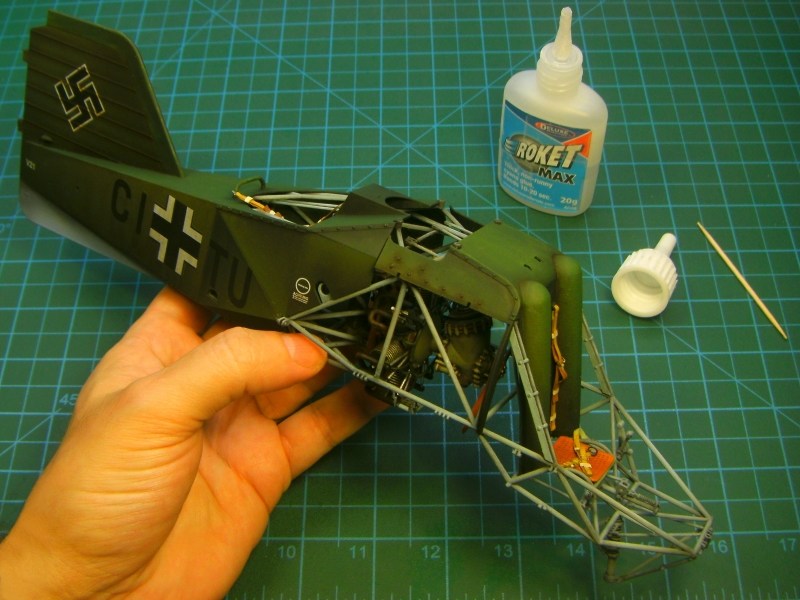
CHAPTER IX - Rear fuselage section assembly
The rear fuselage section on real Flettner 282 helicopter was made of doped fabric covering over the steel and wooden frame. Those who have followed this thread from the start, will remember that the rear fuselage section had already been covered with an overall black / dark brown undercoat and then gradually lighten the surfaces to replicate the way that sunlight hits on large objects, following the Francois Verlinden’s old-fashioned way (which was re-introduced and become popular around the scale modelling community, by its new "modulation" name). The dark undercoat, gradually airbrushed with RLM 71 Dunkelgrün FS 34079 to achieve proper gradations of light, trying to balance between realism factor and artistic expression. IMHO modulation effect does not accurately replicate the reality, but it looks so artistically attractive and becomes easily accepted by our visual subconscious. Custom made water slide decals applied and later everything washed by brushing “Winter Streaking Grime” AK014 filter available by AK Interactive, until the desired colour density is achieved.
As described into pages #25 to #27 of the ultra-detailed “1/18 Fl-282 V21 kit building instructions” manual (which can be found HERE as a downloadable PDF format file), the rear fuselage cover part carefully dragged along the miniature's wooden frame, until reached down on the transmission pivots & secured in place with a drop of cyanoacrylate super glue.




1/18 scale Flettner Fl-282 V21 Kolibri scratchbuil
Excellent work!
Regards,
Excellent work!
Regards,
Nick_Karatzides
Member
1/18 scale Flettner Fl-282 V21 Kolibri scratchbuil
A year passed since April 11th 2015. A day like today and the whole World seems so empty when you miss your other half.
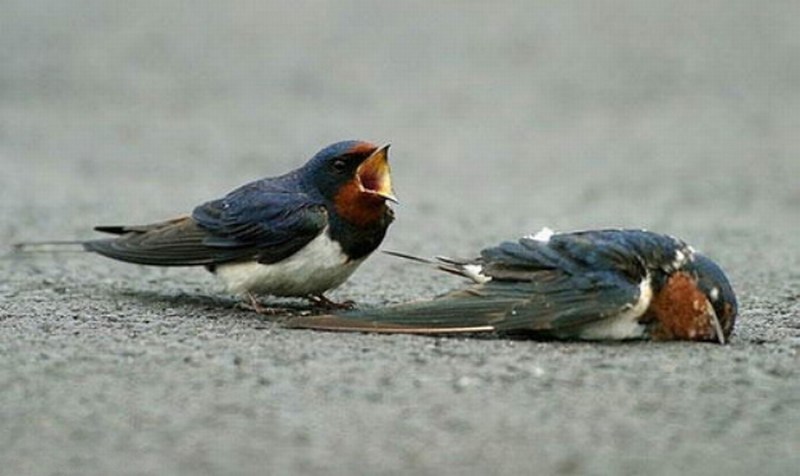
A year passed since April 11th 2015. A day like today and the whole World seems so empty when you miss your other half.

Nick_Karatzides
Member
1/18 scale Flettner Fl-282 V21 Kolibri scratchbuil
Wishing to remember this day and honor her sweet & loving memory, last week Anyuta 3D decided to make an offer for few fellow modelers & skilled craftsmen by sending a limited number of coupons. During last week, few hand-picked forum members, specialy selected talented & promising modelers, received (or about to receive) their own 3D printed 1/18 scale Flettner Fl-282 Kolibri cutaway model kits. By the time these lines are written, the parcels are on their way to modelers postal addresses.
A year passed since April 11th 2015. A day like today and the whole World seems so empty when you miss your other half.
Wishing to remember this day and honor her sweet & loving memory, last week Anyuta 3D decided to make an offer for few fellow modelers & skilled craftsmen by sending a limited number of coupons. During last week, few hand-picked forum members, specialy selected talented & promising modelers, received (or about to receive) their own 3D printed 1/18 scale Flettner Fl-282 Kolibri cutaway model kits. By the time these lines are written, the parcels are on their way to modelers postal addresses.
Heavens Eagle
Well-known member
1/18 scale Flettner Fl-282 V21 Kolibri scratchbuil
Nick, I am sorry for your loss. It is very difficult I know as I lost my wife almost 14 years ago now. I still miss her and think about her a lot. That never goes away. In time it gets easier and you do eventually get to a point where the pain isn't there, but the memories while they will fade a little won't leave and the good parts will be what you remember the most and the best.
You are blessing the recipients of your wonderful kit in a special way. May you be so blessed as well.
:zen
Nick, I am sorry for your loss. It is very difficult I know as I lost my wife almost 14 years ago now. I still miss her and think about her a lot. That never goes away. In time it gets easier and you do eventually get to a point where the pain isn't there, but the memories while they will fade a little won't leave and the good parts will be what you remember the most and the best.
You are blessing the recipients of your wonderful kit in a special way. May you be so blessed as well.
:zen
phantom II
Master at Arms
1/18 scale Flettner Fl-282 V21 Kolibri scratchbuil
 Amazing
Amazing 

Cheers, Christian B)
 Amazing
Amazing Cheers, Christian B)
1/18 scale Flettner Fl-282 V21 Kolibri scratchbuil
Very generous Nick and it's looking great.
Very generous Nick and it's looking great.

Nick_Karatzides
Member
1/18 scale Flettner Fl-282 V21 Kolibri scratchbuil
Steering of the Fl-282 was achieved by a combination of the rudder and differential collective pitch change on the two rotors, but only the rudder could give steering during autorotation since collective pitch was then ineffective (another reason for the large rudder area). Rudder fin (of very generous area), was made of wood and covered by fabric, with max 40° deflection left or right. This large area was necessary because much of it was ineffective due to the poor aerodynamic shape of the fuselage causing rearwards flow separation and turbulence. The vertical stabilizer and the elevators were also made of wood, with plywood leading edge and fabric covering, bolted to fuselage frame.
As described into pages #29 to #32 of the ultra-detailed “1/18 Fl-282 V21 kit building instructions” manual (which can be found HERE as a downloadable PDF format file), the rudder fin’s slots should be aligned onto horizontal stabilizer's hinges as shown on the following pictures. I tried dry fit testing before the final gluing & part secured in place by adding a drop of cyanoacrylate superglue. Since the rudder fin can be instaled turned (with max 40° deflection left or right), the servo bars should be inserted into slots & placed as required. Notice that if the rudder fin is tilted left or right or neutral, the rudder pedals at cockpit area & nose wheel, should be also positioned accordingly.
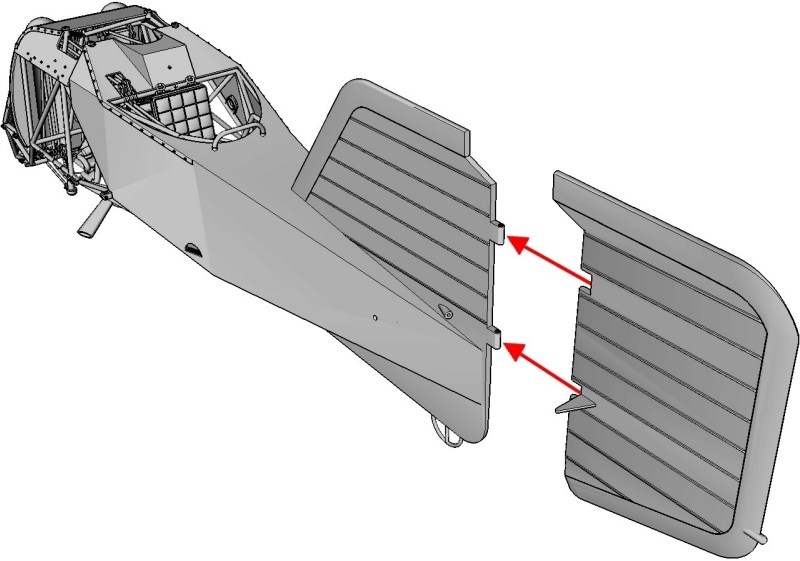
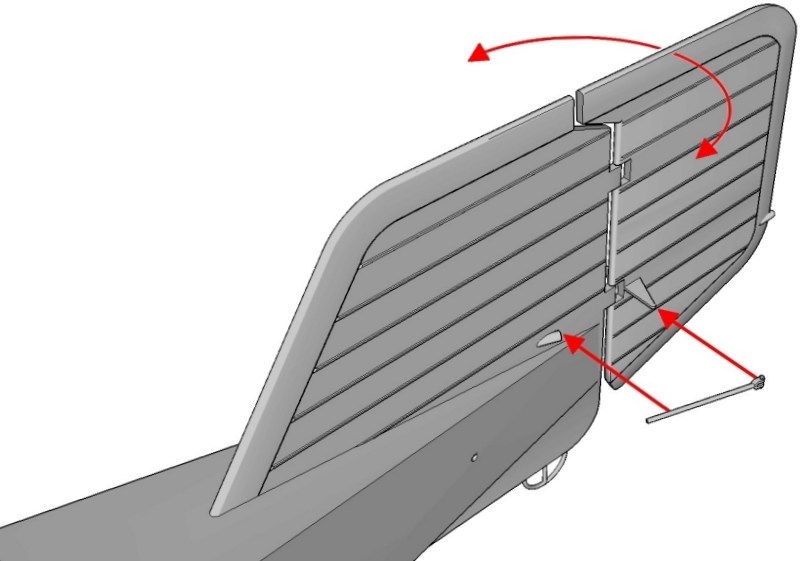
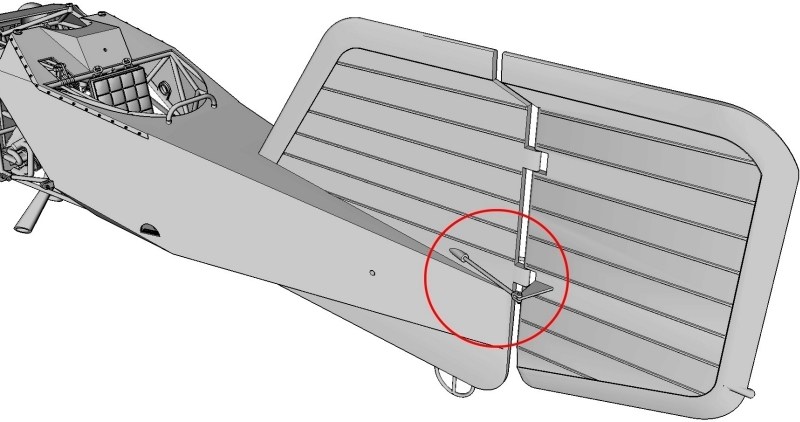
The two horizontial elevator fins should be installed by inserting the 1.4 mm Ø pins through side openings of rear fuselage section as shown on pictures and securing in place with a drop of cyanoacrylate superglue. Keep in mind that if the horizontial elevator fins are placed tilted up or down or neutral, the cyclic / KG.13 control stick at cockpit area, should be also positioned accordingly.
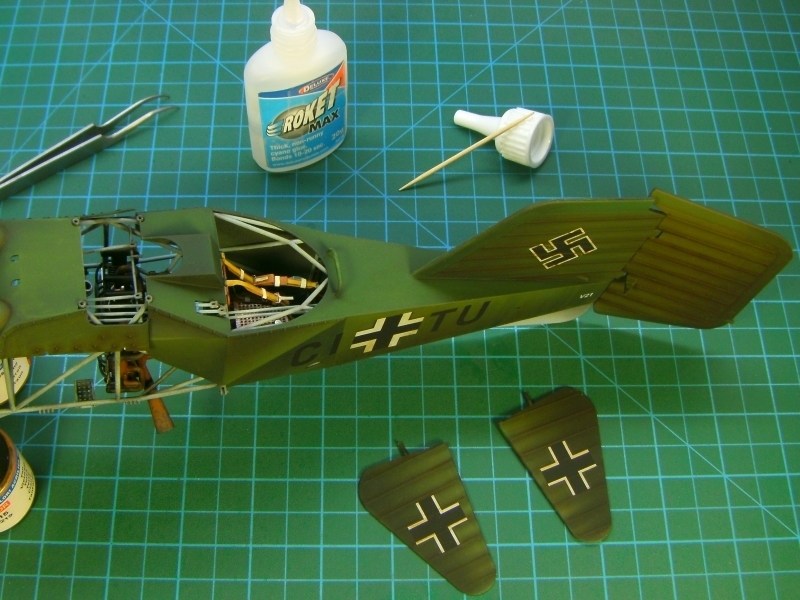
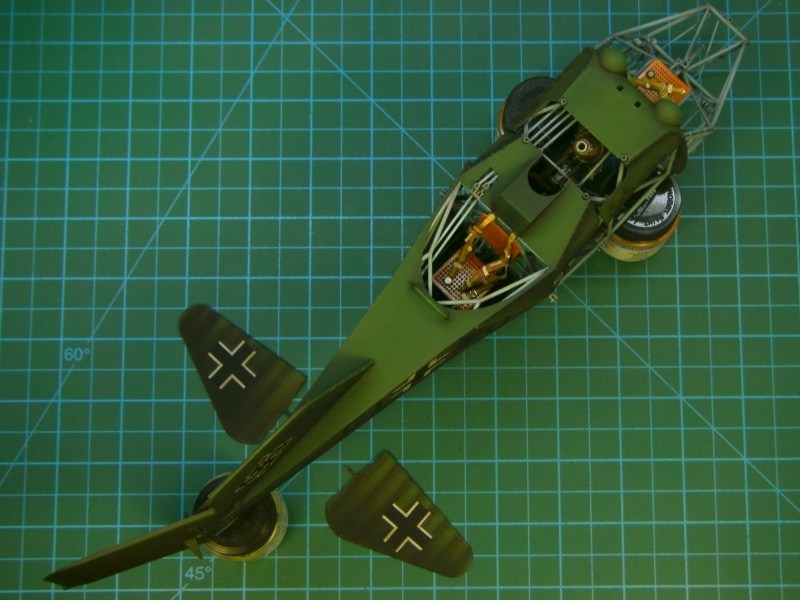
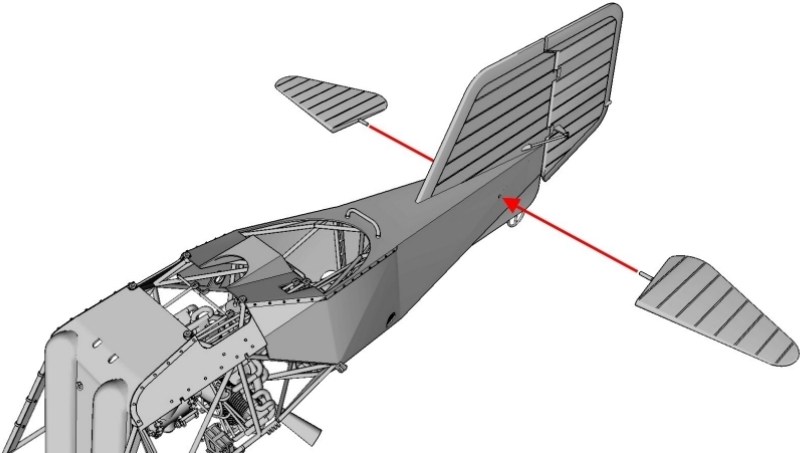
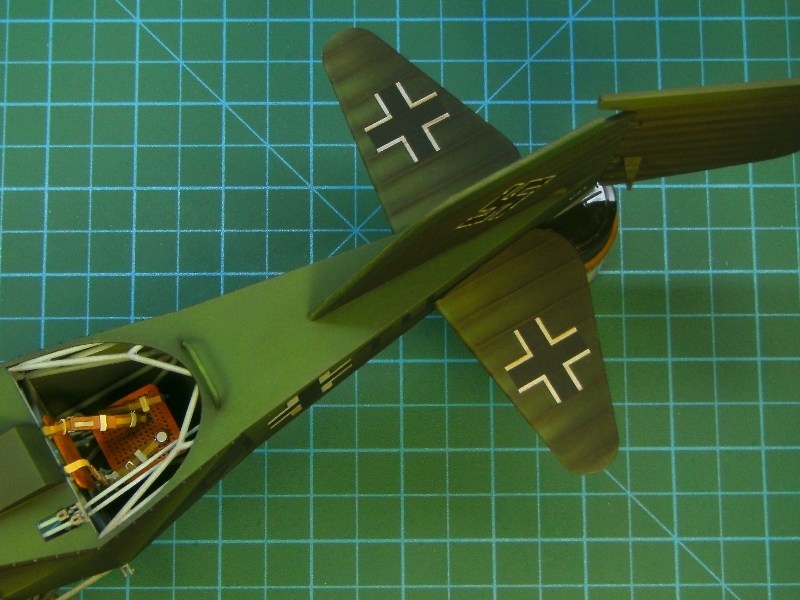
Under normal conditions, each helicopter’s registration ID was duplicated under elevator fins. After all, there are many photographic evidences certifying this feature, just like the following picture showing the CJ-SK registered Fl-282 V17 helicopter, crashed at Travemünde on April 13rd 1944, while test pilot FliegerStabsingenieur (Luftwaffe Major) Gerhard Geike was attempting a “diving nose-down and then pulling back” technique landing.
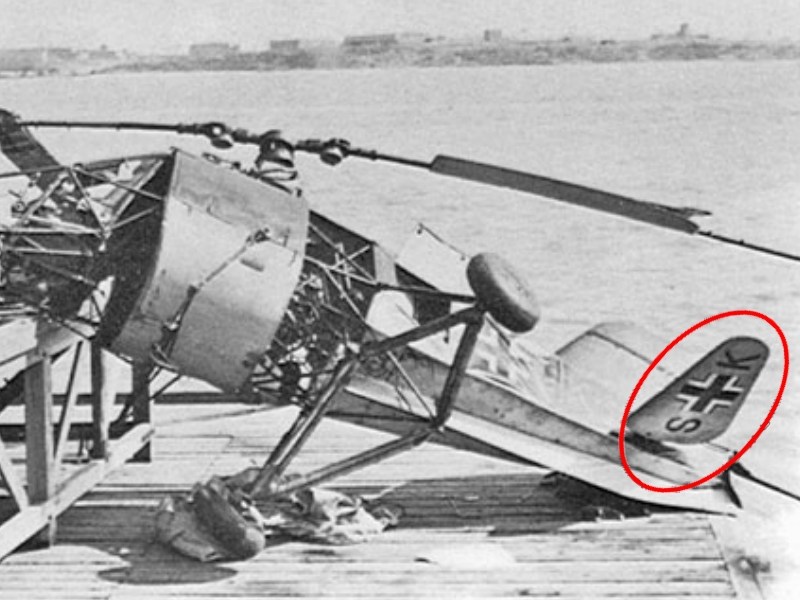
However, there is a rare photograph of the already mentioned CJ-SN registered Fl-282 V20 helicopter assigned to Staffel 1/196 at Pillau AB as found & captured by the British Army, that clearly shows registration missing under the elevator fins. Luckily, the picture taken before helicopter been brutally disassembled, doped fabric ripped away & removed from fuselage, clipped rotor blades cut off & never seen again since that day and remaining framework wreckage with upper rotor transmission parts transferred back to UK as a War trophy and ended up as souvenirs.
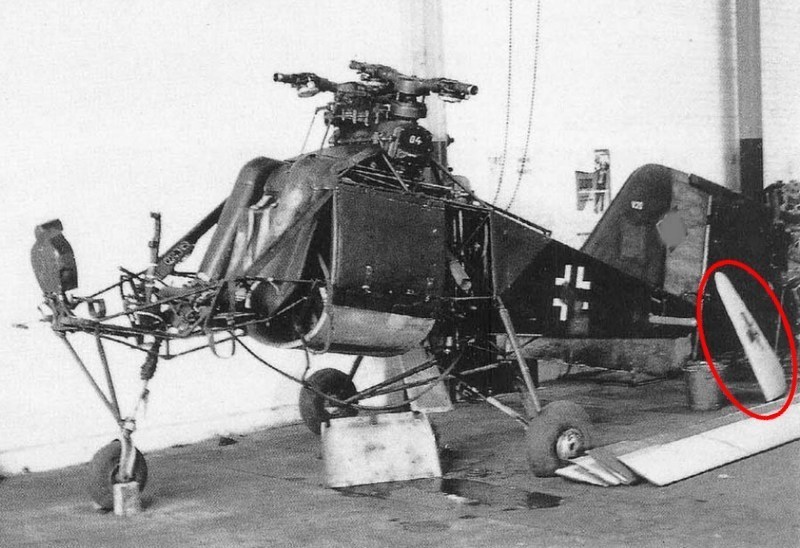
Steering of the Fl-282 was achieved by a combination of the rudder and differential collective pitch change on the two rotors, but only the rudder could give steering during autorotation since collective pitch was then ineffective (another reason for the large rudder area). Rudder fin (of very generous area), was made of wood and covered by fabric, with max 40° deflection left or right. This large area was necessary because much of it was ineffective due to the poor aerodynamic shape of the fuselage causing rearwards flow separation and turbulence. The vertical stabilizer and the elevators were also made of wood, with plywood leading edge and fabric covering, bolted to fuselage frame.
As described into pages #29 to #32 of the ultra-detailed “1/18 Fl-282 V21 kit building instructions” manual (which can be found HERE as a downloadable PDF format file), the rudder fin’s slots should be aligned onto horizontal stabilizer's hinges as shown on the following pictures. I tried dry fit testing before the final gluing & part secured in place by adding a drop of cyanoacrylate superglue. Since the rudder fin can be instaled turned (with max 40° deflection left or right), the servo bars should be inserted into slots & placed as required. Notice that if the rudder fin is tilted left or right or neutral, the rudder pedals at cockpit area & nose wheel, should be also positioned accordingly.



The two horizontial elevator fins should be installed by inserting the 1.4 mm Ø pins through side openings of rear fuselage section as shown on pictures and securing in place with a drop of cyanoacrylate superglue. Keep in mind that if the horizontial elevator fins are placed tilted up or down or neutral, the cyclic / KG.13 control stick at cockpit area, should be also positioned accordingly.




Under normal conditions, each helicopter’s registration ID was duplicated under elevator fins. After all, there are many photographic evidences certifying this feature, just like the following picture showing the CJ-SK registered Fl-282 V17 helicopter, crashed at Travemünde on April 13rd 1944, while test pilot FliegerStabsingenieur (Luftwaffe Major) Gerhard Geike was attempting a “diving nose-down and then pulling back” technique landing.

However, there is a rare photograph of the already mentioned CJ-SN registered Fl-282 V20 helicopter assigned to Staffel 1/196 at Pillau AB as found & captured by the British Army, that clearly shows registration missing under the elevator fins. Luckily, the picture taken before helicopter been brutally disassembled, doped fabric ripped away & removed from fuselage, clipped rotor blades cut off & never seen again since that day and remaining framework wreckage with upper rotor transmission parts transferred back to UK as a War trophy and ended up as souvenirs.

Similar threads
- Replies
- 150
- Views
- 24K
- Replies
- 21
- Views
- 4K
- Replies
- 46
- Views
- 10K
- Replies
- 14
- Views
- 3K
- Replies
- 8
- Views
- 2K

 Fantastic work!
Fantastic work!
